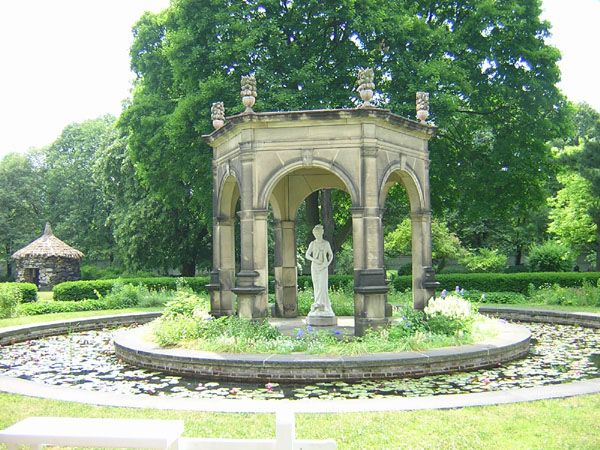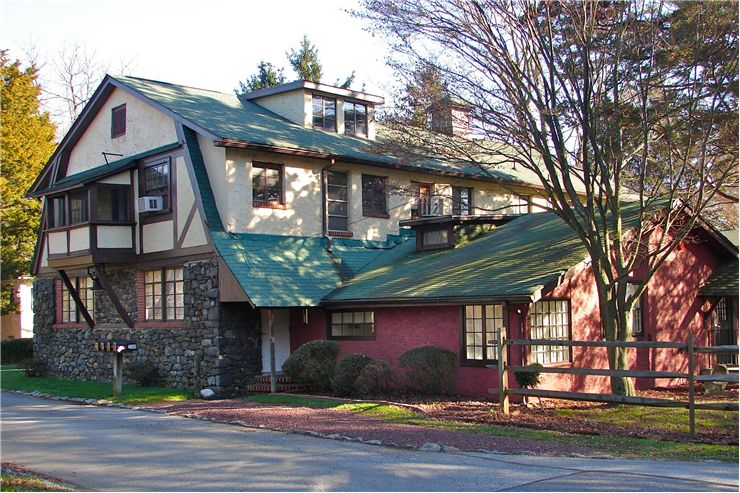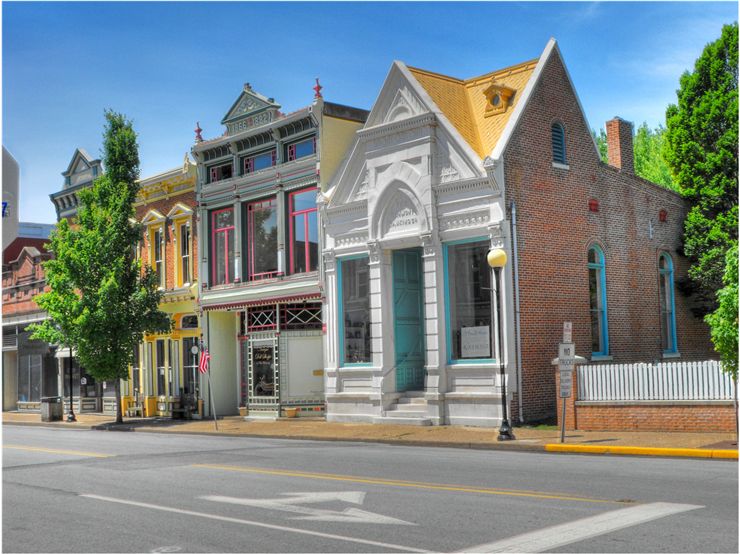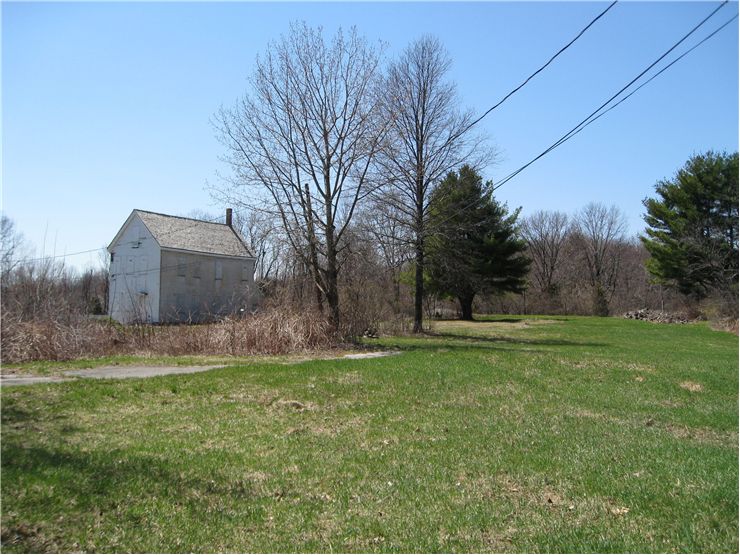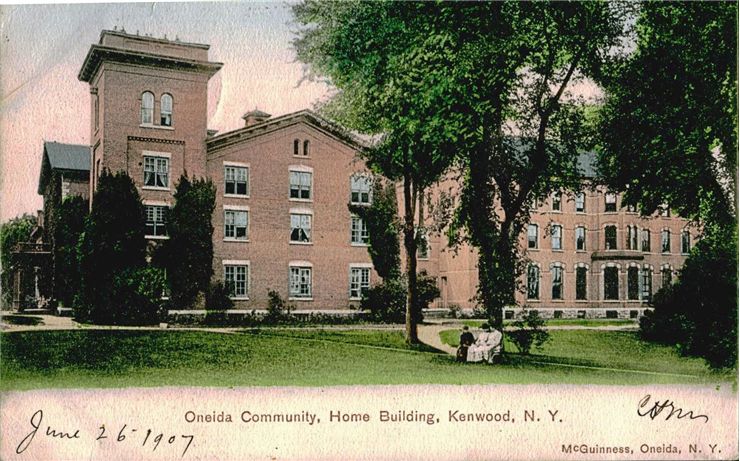Utopian Communities - Perfect World
Old Economy Village (1824-1906) was the last of the three settlement established by the Harmony Society, an Christian theosophy and pietistgroup that moved its followers from Germany to USA in early 1800s. Village was established in 1824, and in 1966 was designated as a National Historic Landmark District.
New Harmony (1825-1829) was the second town established by the Harmony Society, communal German religious pietistsgroup often called Harmonists or Harmonites. After their religious leader George Rapp decided to move its followers to Pennsylvania, he sold this city to the Welsh social reformers Robert Owen and William Maclure. Under their leadership town did not managed to prosper, and as of today over 700 people lives in this historic utopian settlement.
Brook Farm (1841-1847) was an experimental utopian settlement in West Roxbury, Massachusetts in 1841 by the former Unitarian minister George Ripley and his wife Sophia Ripley. Workers on that farm could elect to do any job they preferred, and everyone received same share of profit. Low financial security brought this settlement to the bankruptcy, when fire engulfed one of their buildings. Brook Farm officially shut down in 1847, and many workers regarded this experiment as a success.
North American Phalanx (1841-1856) was built in Colts Neck Township, in Monmouth County, New Jersey. Influenced by the beliefs of French philosopherCharles Fourier, citizens of this community believed that human beings could be more prosperous while living in communal societies, rather than with individual private living. In total, 120 to 150 people lived in this settlement, until its dissolution in 1856. Factors that contributed to this were dispute over the woman rights and two fires.
Hopedale Community (1842-1868) was founded inWorcester County, Massachusetts by the American prominent proponent of pacifism, socialism and abolitionismAdinBallou. During its 14-year long life, this community stood for temperance, abolitionism, woman's rights, spiritualism and education.
Fruitlands (1843-1844) was a short-lived agrarian utopian community that was founded by the American philosopher Amos Bronson Alcott and Charles Lane. Governed by the ideology of Transcendentalist, members of this community did not use animal workforce, artificial forms of life or ate animal substances.
Oneida Community (1848-1881) was founded in Oneida, New York by the American utopian socialistJohn Humphrey Noyes. This religious commune believed that Jesus Christ had already returned and that they could be able to make perfect world free from sin and suffering. Oneida Community dissolved after many years of outside pressures (American authorities tried several times to arrest Noyes for his practices of group marriages) and natural disasters.
Icarians (1848-1898) was the name of the French utopian movement that established several egalitarian communities across the America. Under the leadership of Etienne Cabet, over a hundred French colonists in six settlements practiced the equality of race, religion, ethnicity, sex, political affiliation, economic status, social status, and cultural heritage.
Raritan Bay Union (1853-1858) was the name of the progressive boarding school in Perth Amboy, New Jersey. Founded by the Marcus Spring and Rebecca Buffum, this school embraced equality of all of its students, especially women.
Octagon City (1856-1857) was a failed agricultural utopian community near Humboldt, Kansa. Founded under the principle of vegetarian life, town quickly failed when unprepared settlers were unable to sustain their way of life in this remote community.
Reunion Colony (1855-1869) was a socialist utopian community, formed near the forks of Trinity River in Texas, USA. Filled with French, Belgian, and Swiss colonists, this town was the first of the 29 similar communities that were built across the USA. They all followed the teachings of the French philosopher Francois Marie Charles Fourier.
Shalam Colony (1884-1901) was a religious utopian community that followed the teachings of the bookOahspe: A New Bible. Created by the John BallouNewbrough (1828-1891) this book proposed that every person must be in service of other.
Equality Colony (1897-1907) was the American socialist colony that had the goal of converting the rest of the US to socialism. It was disbanded in 1907, after the dispute of the several dissatisfied citizen factions.
Home, Washington (1895-1919) was an unincorporated community created in Pierce County, Washington, United States. This model of utopian city was created in the hope to give home to those who wanted to be free from the higher authorities (government, religion). In the early years of 20th century, it was home of anarchists.
Arden, Delaware (1900-present) is a village and art colony in New Castle County, Delaware, that was created by the sculptor Frank Stephens and architect Will Price. Created under the principles of Russian philosopher Peter Kropotkin, they followed his ideas of communist society free from central government and based on voluntary associations between workers. As of 2010, over 400 people still lives in this village.
Freeland, Washington (1900s-present) is a village in Island County, Washington, United States. It was created by former members of the nearby utopian settlement called Equality Colony. They practiced the idea of commonly shared land, and as of 2010, over 1300 people still lives in this small town.
East Wind (1973-present) in an experimental utopian community located in south central Missouri. In it, all goods are shared between its members, and every decision is made via democratic process.
